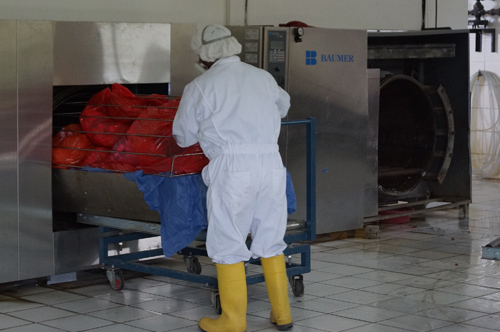Puncture Resistance Autoclave Bags After Sterilization
One of the foremost important features of autoclave bags is that the strength of the bag after sterilization, which doesn’t disintegrate after the sterilization process of the autoclave bag. Another important feature of the autoclave bag is what proportion durability the bag has after sterilization. it’s associated with several main parts like raw materials, thickness, and also the size of Puncture Resistance Autoclave Bags.
The following should be done to eliminate puncture resistant autoclave bags
Autoclave bags are vapor impermeable and so mustn’t be twisted or glued as this could prevent proper load sterilization.
• don’t overload the autoclave. Leave enough space for full steam circulation.
Autoclave bags containing biological waste should be autoclaved at 121 ° C for a minimum of half-hour to confirm sterilization. Use high-temperature bags and autoclaves at 135 ° C for a minimum of half-hour to wash and deactivate biological waste, especially resistant ones.
• Water should be added to solid waste bags to permit the load to be sterilized.
• don’t place sharp objects like broken glass containers within the autoclave bag as this can cause the opening to puncture.
• Do all the steps of collecting and transporting garbage bags by hand because the utilization of mechanical devices will cause the luggage to rupture and spill contaminated material.

Low Density Polyethylene (LDPE)
Polyethylene is the most commonly used plastic in the world. Low-Density Polyethylene is the material used in most poly bags mainly because it provides great strength, clarity, and flexibility.
High Density Polyethylene (HDPE)
High Density or HD bags are made out of a skinny and light-weight substance, which helps to lower the value of the luggage yet because the freight. High-Density bags aren’t as clear as Low-Density poly bags however they’re very strong, tear-resistant, and stiff. These bags are both strong and economical.
Polypropylene (PP)
PP offers excellent film clarity for display. The cellophane film works as a barrier to preserve aromas and keep food fresh. Cellophane also enhances the appearance of products. Cellophane however is not recommended for use in extreme temperatures.
Polypropylene
Polypropylene has the highest clarity available. This is an excellent material to protect against moisture and vapors. It is suitable for food, crafts, photos, cards, and scented products. Polypropylene is the preferred option for display.
In the picture below, you can see the tensile strength and puncture resistance of the pp autoclave bag produced by BrandPlast. Those who are autoclave bags wholesale can contact us.
